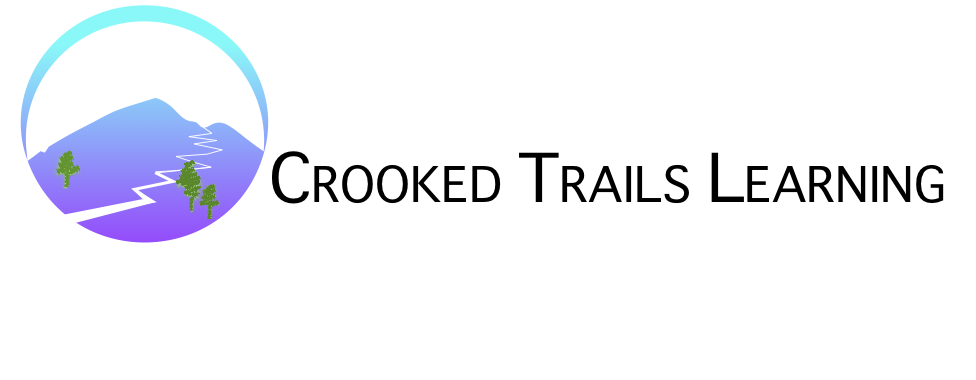I’m Ready to Learn the TPRS Method! Plank 3
/Plank 3
Plank 3: Get some training: If you can, attend a workshop. If not, watch a video series and/or read a book about the specific procedures. TPRS is not hard, but there are a few principles and techniques - inviting students into the process, circling, slowing down, pointing, teaching to the eyes - that you want to absorb before you jump in.
A workshop is the easiest way to learn TPRS. They generally last from half a day to two days. If you can’t find a workshop near you, the next best option is to watch some videos by experienced teachers and read a book or two. Whatever you do, just make sure you check off these 3 Steps, and 5 Basic Skills as you learn.
The Three Steps:
- Establish Meaning - Write the 3 structures, say/write in English the meaning, discuss with students a way to remember it (gesture, and word association), use the structures for 2 - 10 minutes in personalized questions and answers with the students. This ‘PQA’ could last longer if it's going well and providing compelling repetitions.
- Create a story - set up a situation with your students and work through a story, slowly, finding interesting ways to repeat and repeat those structures: There’s a guy, in Wauwatosa, Wisconsin, his name is Mike, he wants a green car…… The story could take 30 minutes to two hours, depending on your style.
- Read - read a previously chosen, short, easy to understand story, together as a class. Usually translate as you go, together. Steps 1 and 2 lead up to the reading step, because the 3 structures were originally chosen with the vocabulary of this story in mind.
The Five Basic Skills:
- Point and pause
- Circle
- Go slow
- Teach to the eyes
- Continually check that you have stayed in the COMPREHENSIBLE zone
As you learn TPRS and CI there are some phrases and abbreviations the language teaching community uses. Here’s a short list:
structure - the word or phrase you are trying to teach
breakdown - lack of understanding
embedded reading - a series of 2 or 3 progressively more difficult versions of the same story
TL - target language
FL - foreign language
L1 - first language
L2 - second language
PQA - personalized questions and answers
TPR - total physical response
TPRS - Teaching Proficiency through Reading and Storytelling
CI - comprehensible input
CCCI - compelling, comprehensible, contextualized input
BEP - bizarre, exaggerated, personal (stories)
SLA - second language acquisition
SSR - sustained silent reading
PMS - personalized mini-story
FVR - free voluntary reading
LOTE - language other than English.
WORKSHOPS:
You can find great workshops at all the sites below. There are two national conferences in the summer (NTPRS and iFLT). In addition, different trainers schedule workshops throughout the year. Or, consider organizing a TPRS workshop with one of these presenters, at your favorite homeschool convention!
tprsbooks.com (Blaine Ray has a workshop schedule and info on the NTPRS conference. I took a Blaine Ray workshop in LA and it was great - he demonstrated TPRS on us by teaching us German, explaining as we went along, and then having us practice the techniques on each other. By the way, when I took Ray’s workshop, he offered an “I’m paying for this training myself” discount. Don’t know if he still does that, but it is worth asking.)
tprstorytelling.com (Carol Gaab has a workshop schedule and info on the iFLT conference)
ntprs.com (annual conference)
coachforeignlanguageproject.org
tprsacademy.com (This is in the Netherlands, so if you are in Europe looking for TPRS training, start here.)
You can also contact several experienced TPRS teachers to set up workshops in your area. For example, check out:
terrywaltz.com (especially for Chinese)
tprstories.com (presenter is Karen Rowan)
info@exceleratespanish.com (presenter is Caryn Hommel) By the way, Caryn is a homeschool teacher and will gladly help you out with your homeschool language endeavors. Contact her by phone or online.
ALTERNATIVES TO WORKSHOPS:
If you can’t make a workshop, here are ways to learn TPRS via videos, and books.
1. The original manual for TPRS, Fluency Through TPR Storytelling, by Blaine Ray and Contee Seely, is found at TPRSbooks.com, and at Amazon. Also known as 'the green book'. You don't want to not get this book, because it has everything clearly explained and described. Different chapters cover the method, what to do about grammar, what to do in 1st, 2nd, 3rd and 4th year, reading, pacing, how to adapt a textbook for TPRS. There is also a (success) story from a teacher in her first year of TPRS, about a boy named Jeff, that almost brought me to tears. In the most recent edition, there is a review of research done on TPRS since the 1990s. Blaine also has a DVD training video for $15 on his TPRSbooks website.
2. Ben Slavic has so much information on his website, benslavic.com. He sells an 8 hour DVD training for $40. (I bought it, it’s fabulous.) He also has free short training videos and a huge amount of handouts on his website. On his youtube channel, “Ben Slavic TPRSMyWay”, you can jump right to all his free videos. Two of the videos are over an hour, an entire class period or more. The shorts are serial sections of various classes - 6th grade, 7th grade, and high school - with commentary.
Ben also has great books available. The first, TPRS in a Year, “was written with one thing in mind – to create a greater sense of safety for the novice TPRS teacher.” You can read a lot of free pages on Ben’s website, which will probably convince you to buy the book. Ben has many other helpful books. I have TPRS in a Year, PQA in a Wink, and Stepping Stones to Stories. Those three books have so many helpful ideas in them I’ll be rereading them for years.
Finally, if you join Ben’s Professional Community, for $5 a month, you will have access to over 100 TPRS class videos supplied by the TPRS community, and many, many articles, handout, rubrics, etc.
3. Adriana Ramirez has two series of videos at her youtube channel, TPRS Storytelling! You can watch every day of her 6 day teaching cycle with a group of students in their tenth week of class. And, you can watch the first 4 days of storytelling in the first week of a beginner Spanish class.
4. If you are specifically interested in teaching Chinese, Terry Waltz has a book called TPRS with Chinese Characteristics, at TPRSbooks.com and at Amazon. Fascinating!
5. https://training.fluencymatters.com This is the training site connected to Carol Gaab’s tprstorytelling.com website. There are some free talks, under "ACTFL 2015 conference", and under "iFLT 2016 conference". Also “SLA from Day 1” is free. Most of the teacher training videos, however, are about 20 minutes long and cost 10 credits for 24 hours of viewing accessibility. I’ve watched several and they are very good. You can get 40 credits for $30.
So, IN SUM, the most efficient way to learnt TPRS is attend a workshop. Failing that, a good second alternative is to watch a good series of videos, like Slavic’s, Ramirez’ or Ray’s. Then buy and read a book or two, which will be a lot more more efficient than wading through the large scattering of TPRS websites that exist.
NOTES:
If you are going for absolute information overload, you can find links to many, many TPRS websites by doing this:
Go to tprstorytelling.com and click on “Helpful links”.
Go to www.ntprs.info and click on “Links”.
Go to martinabex.com and scroll down to “Favorite Resources”.
By the way, you can earn graduate credit through the Professional Community on benslavic.com, at fluencymatters.com, and at the iFLT national conference.

